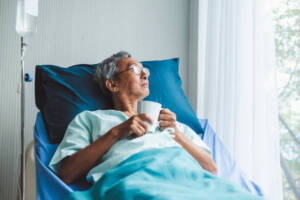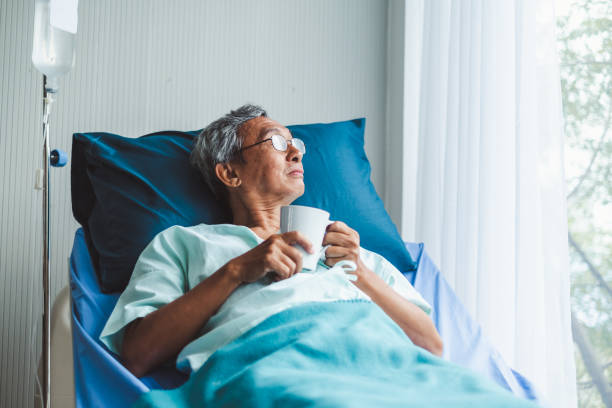How to Decrease Risk Of Pressure Ulcers (Bedsores)
I went golfing recently and after the round, I noticed a blister forming on my left hand. My initial reaction was to laugh it off as a sad reminder of a poor grip and swing that led to the irritation. Over the next couple of days, the blister swelled up, causing me more than a little discomfort. What was once funny was now a source of pain and aggravation.
I was a bit angry at myself for not being proactive earlier when the irritation first happened. I should have known better given what I’ve learned about pressure ulcers as a health professional. I’ve worked in a variety of health care facilities and I’ve seen people suffering from pressure ulcers, which is the medical term for its more common name – bedsores.
Why Pressure Ulcers Happen
The reason the blister formed was because of the constant, unnatural friction on my hand from the grip of my golf club. It’s the same reason bedsores happen to some people who are receiving medical care and especially to those confined for extended periods of time to beds or wheelchairs. What happens is the blood supply to a specific area is reduced. The lack of adequate blood flow can lead to irritation that causes the skin tissue to become damaged or die.
People that are at a higher risk for pressure ulcers include those who:
- Are confined to a bed or chair with limited mobility
- Have bowel or bladder control issues
- Have weight control problems
- Spend a lot of time in one position because of mobility limitations
While a poor golf grip caused my hand to blister, bedsores can affect many more parts of the body and seniors can be particularly at risk because they are typically less mobile. Feet, knees, hips, elbows and backs are common areas bed sores can occur. Symptoms can include redness, tender or hard skin and an actual disintegration of the top layers of the skin.
Pressure Ulcers Are Preventable
The best treatment for bedsores is prevention. Preventing bedsores is Healthcare 101, and medical professionals on many levels know how to identify the symptoms early on and how to correctly respond. It’s why elders suffering from bedsores in a medical facility is a red flag. It shouldn’t happen unless someone’s not doing their job the right way. If you have a loved one being cared for and he or she has bedsores, bring it to the attention of everyone involved in their care from the attending personnel to the facility administrators.
Bed sores can occur in any type of care facility from a major hospital to a home care situation. The risk can be minimized by making sure the person is wearing clothing that is properly fitted, neither too loose nor too tight because either one can cause skin irritation. The right type of bedding is also important. Foam-type mattresses and those filled with gel or air can lessen the chances of skin irritations. Maintaining proper personal hygiene is another way to lessen the bedsore risk. Pressure ulcers are less likely to form if the skin is kept clean, if soaps and scrubbing techniques are gentle and if moisturizers and protectants are used when necessary.
Be Proactive About Bed Sores
Regular chairs and wheeled ones can also increase the risk of pressure ulcers if they are not suitable for the person using them. Foam inserts or padding can make normal chairs more comfortable and if weight gains fluctuate significantly up or down, a different type or size of wheel chair may be in order.
If left untreated, pressure ulcers can lead to more serious and sometimes even life-threatening complications. That’s why preventing them in the first place is the primary objective for those at risk for pressure ulcers.
Next time I tee it up, I’ll prevent a blister with a glove or a golf lesson. Protect yourself and the ones you love with the same type of preventative mindset. The best way to deal with pressure ulcers is to keep them from happening in the first place.

Lonely old asian patient on patient bed in hospital

